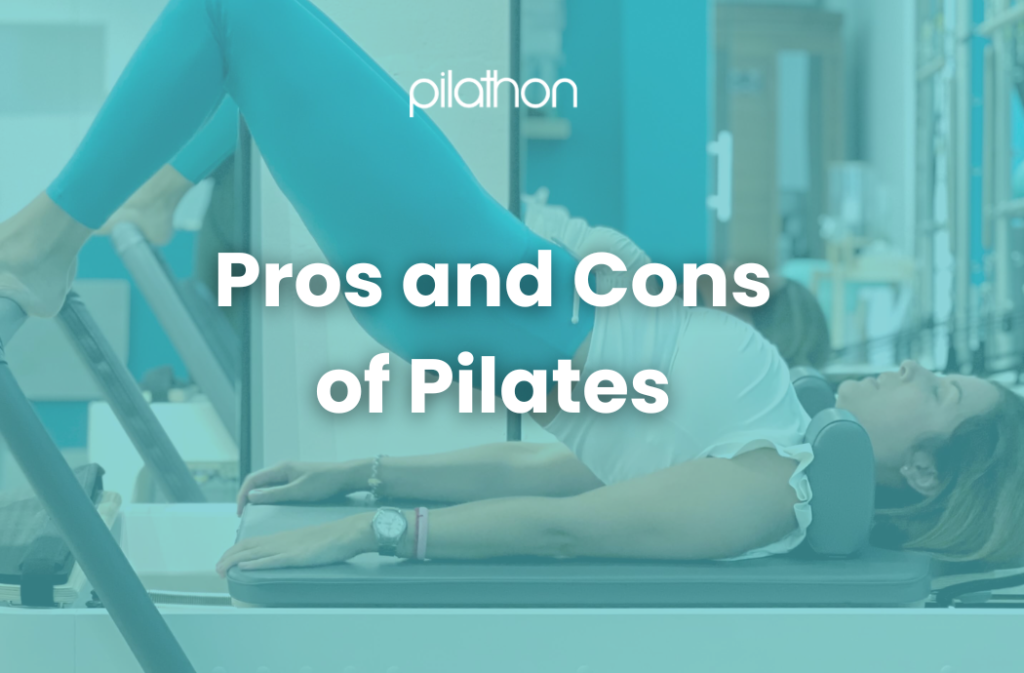Whether you’re an athlete looking to improve performance, a 9-5 worker seeking stress relief, or someone recovering from an injury, Pilates offers a unique blend of strength, flexibility, and mindfulness that appeals to a wide array of individuals.
However, like any fitness routine, Pilates comes with its own set of pros and cons. In this article, we’ll explore the multifaceted benefits of Pilates, such as its ability to boost core strength, improve flexibility, and promote mental clarity.
We’ll also discuss some of the potential drawbacks, including the learning curve for beginners and the importance of being guided by a certified instructor.
By the end of this guide, you’ll have a clearer picture of what Pilates entails and whether it’s the right fit for your fitness journey.
Contents on this article
Benefits of Pilates
1. Efficient Movement and Performance

Pilates is renowned for its ability to enhance overall movement efficiency and performance, making it a valuable addition to both athletic training and everyday life. At its core, Pilates emphasizes controlled, precise movements that align the body and optimize muscle function.
This focus on precision helps streamline movement patterns, leading to more efficient and effective bodily motions even in day-to-day activities:
- Improved Functional Movements: Everyday activities such as bending, lifting, and reaching become easier and more efficient with a strong core and better alignment.
- Enhanced Mobility and Ease of Movement: As Pilates improves flexibility and balance, it enhances overall mobility. This is particularly beneficial for older adults or individuals with mobility issues, who may find that everyday tasks become less challenging and more enjoyable.
- Increased Energy Efficiency: Efficient movement means less wasted energy. Pilates helps you move more effortlessly and effectively, conserving energy and reducing fatigue in daily activities.
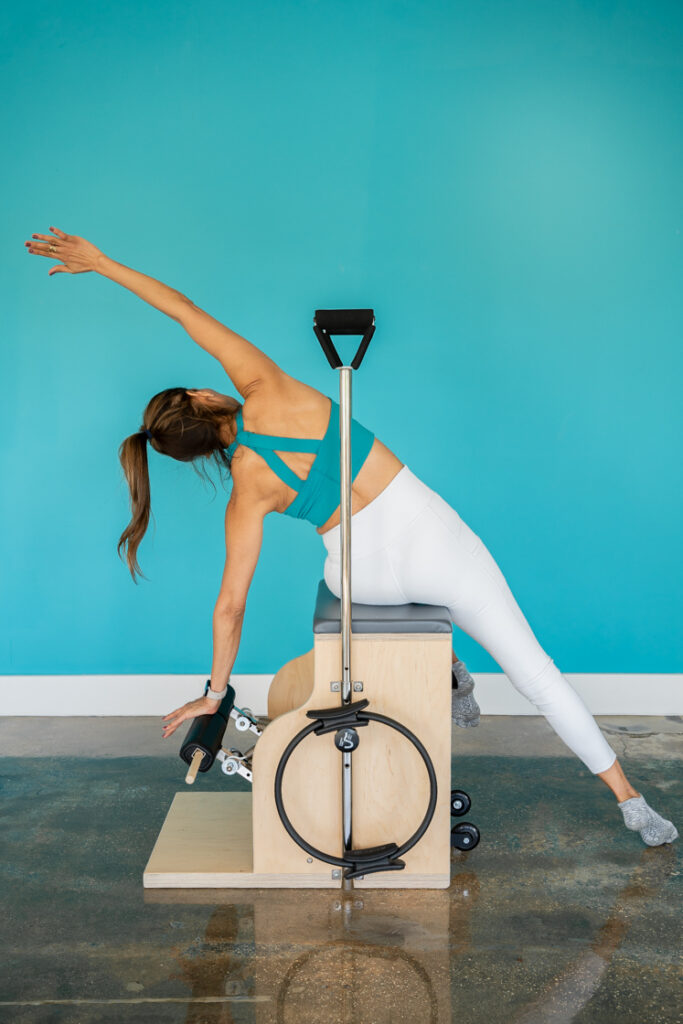
2. Enhanced Strength

Strength is a cornerstone of overall fitness, impacting everything from daily activities to athletic performance. Pilates excels at building strength, with a particular focus on the core muscles, which play a pivotal role in almost every movement we make.
The core is the powerhouse of the body in Pilates terminology. It encompasses not only the abdominal muscles but also the muscles of the lower back, hips, and pelvis. Pilates exercises are designed to engage and strengthen these muscles, creating a solid, stable foundation.
For example, movements like the “Plank” or “Hundred” challenge the core to maintain stability and control, building deep, functional strength. This strong core supports the spine and enables efficient movement patterns, whether you’re lifting a heavy object or simply standing upright.
While the core is a primary focus, Pilates is a full-body workout. Exercises in Pilates are designed to engage multiple muscle groups simultaneously. This holistic approach means that while you’re performing a leg stretch, your core is stabilizing, and your arms are also engaged.
Lastly, unlike traditional strength training, which often aims for muscle bulk, Pilates emphasizes functional strength that supports balanced and efficient movement. This approach makes it suitable for individuals of all body types and fitness levels.

3. Improved Balance

Balance is a fundamental component of physical fitness and daily function. It influences everything from walking to complex athletic movements. Pilates excels in enhancing balance and stability through its focus on core strength, alignment, and controlled movements.
Good alignment ensures that the body’s weight is distributed evenly, reducing the risk of falls and injuries. Exercises such as the “Roll Up” or “Spine Stretch” promote spinal alignment and teach practitioners how to carry themselves with optimal posture.
This alignment not only supports balance but also allows for more efficient movement. When the body is correctly aligned, it requires less effort to maintain stability and perform tasks, leading to improved balance.
In addition, many Pilates exercises involve dynamic movements that challenge balance in various ways. Movements that shift the body’s center of gravity, such as the “Reformer Lunges” or “Side Kicks,” require continuous adjustment and stabilization.
These dynamic challenges mimic real-life situations where balance is tested, such as navigating uneven surfaces or changing direction quickly. Practicing these movements in a controlled environment helps build the skills needed to maintain balance in more unpredictable settings.
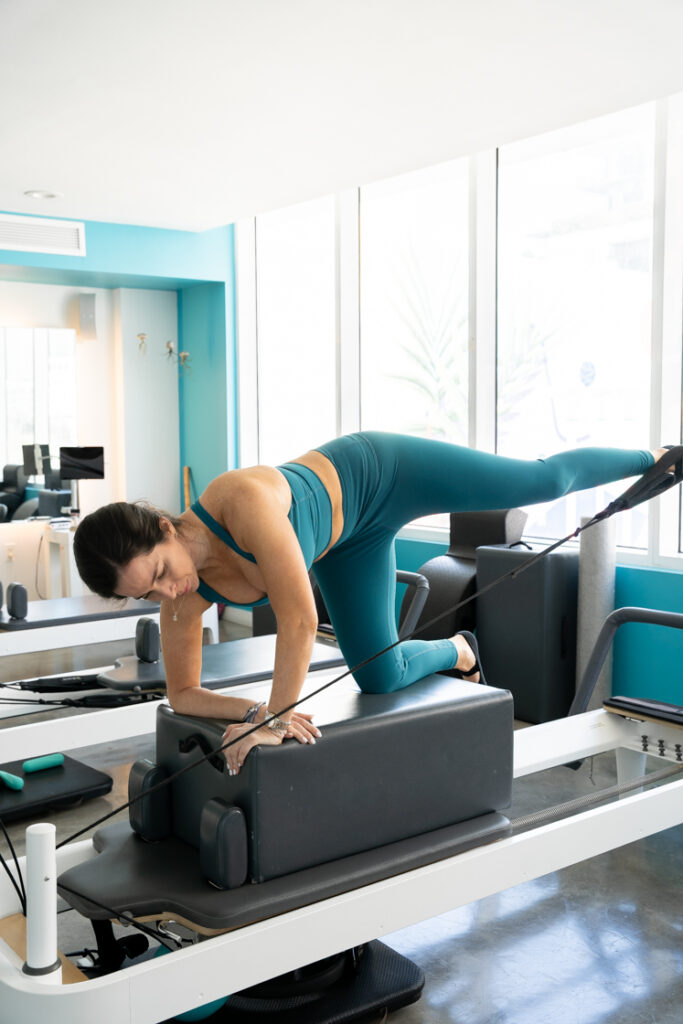
4. Better Coordination

Coordination is the harmonious function of multiple muscle groups working together to produce smooth and controlled movements. It is essential for almost every activity we perform, from walking and typing to playing sports and dancing.
Pilates is particularly effective at improving coordination by emphasizing precise movements, alignment, and the integration of the mind and body. This focus helps practitioners move with grace and efficiency, both in their workouts and in daily life.
A key principle of Pilates is the strong emphasis on the mind-body connection. During Pilates exercises, practitioners are encouraged to concentrate on their breathing, muscle engagement, and movement patterns.
This mindfulness fosters better neuromuscular coordination, as the brain learns to communicate more effectively with the muscles. For example, exercises like the “Single Leg Stretch” require mental focus to ensure that the movements are performed smoothly and with control, promoting coordinated actions.
Unlike some workout regimens that emphasize speed or repetition, Pilates prioritizes the quality of movement. This precision helps to enhance coordination as the body learns to move in a more integrated and efficient manner.
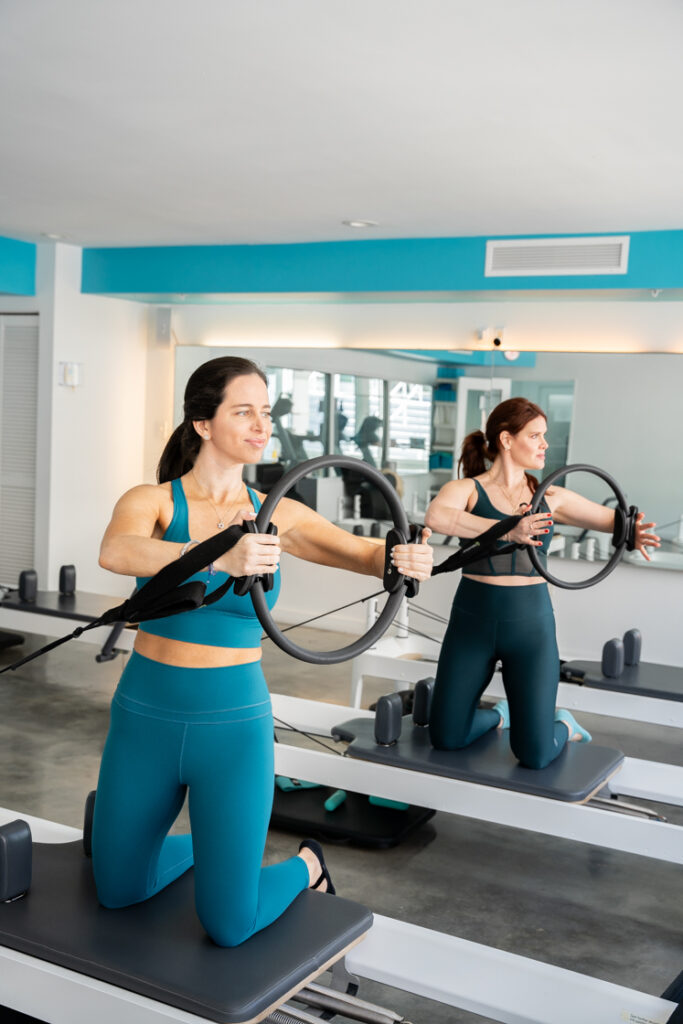
5. Increased Happiness

In addition to its physical benefits, Pilates plays a significant role in boosting mood and promoting overall well-being. Regular Pilates practice not only enhances the body but also nurtures the mind, contributing to a greater sense of happiness and mental clarity.
This is largely due to the physiological and psychological changes that occur during and after Pilates sessions, including the release of endorphins and the cultivation of a mindful, focused practice.
Pilates encourages practitioners to focus deeply on their breath, body movements, and alignment. This mindfulness practice helps to quiet the mind, reduce stress, and bring a sense of peace and presence.
Techniques such as the “Spine Stretch Forward” or “Roll Down” combine stretching and deep breathing, which are effective in calming the nervous system and reducing cortisol levels, the hormone associated with stress.
Regular Pilates practice contributes to long-term improvements in mental health. Beyond the immediate boost from endorphin release, consistent Pilates sessions help reduce symptoms of anxiety and depression.
The combination of physical activity, mindfulness, and community support creates a powerful framework for maintaining emotional balance and resilience. Over time, practitioners often find that they experience fewer mood swings, better stress management, and a more positive overall outlook on life.
6. Greater Flexibility

Flexibility is a key component of overall fitness and well-being, influencing how easily and comfortably we can move through daily activities and physical exercises. Pilates is renowned for its ability to enhance flexibility through a unique combination of stretching and strengthening exercises.
By consistently practicing Pilates, you could increase their range of motion, reduce muscle stiffness, and achieve a more fluid, graceful movement pattern.
Pilates incorporates both dynamic and static stretching techniques to enhance flexibility. Dynamic stretching involves moving parts of your body through a full range of motion in a controlled manner, which warms up the muscles and improves mobility.
Static stretching, on the other hand, involves holding a stretch for a prolonged period, which helps to lengthen the muscles and improve overall flexibility.
Pilates exercises are designed to progressively increase the range of motion in joints and muscles. Each session builds on previous ones, gradually extending the limits of what your body can do.
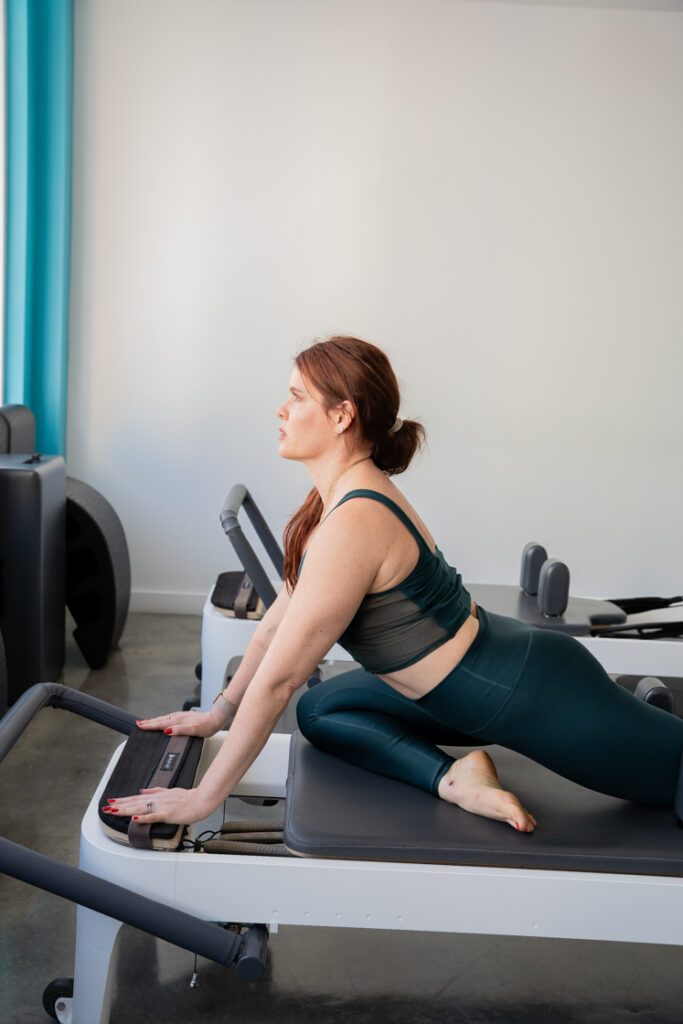
7. Enhanced Self-Esteem

Self-esteem, the sense of worth and value that we attribute to ourselves, plays a significant role in our overall well-being and quality of life. Regular Pilates practice has been shown to have a profound impact on self-esteem, fostering a positive self-image and boosting confidence. Through its focus on mindfulness, body awareness, and personal empowerment, Pilates provides a supportive environment for individuals to develop a deeper connection with themselves and cultivate a sense of self-worth.
Mind-body connection is instrumental in building self-esteem, as it allows individuals to recognize and appreciate the strength, flexibility, and resilience of their bodies. By tuning into their bodies during Pilates practice, practitioners develop a greater sense of self-awareness and self-acceptance, which are essential components of healthy self-esteem.
Besides, one of the most significant benefits of Pilates is its ability to promote a positive body image. Unlike traditional forms of exercise that may focus solely on achieving a certain aesthetic ideal, Pilates encourages practitioners to appreciate their bodies for what they can do rather than how they look.
Through mindful movement and controlled exercises, individuals learn to respect and honor their bodies, regardless of size, shape, or perceived imperfections. This shift in focus from appearance to function fosters a more compassionate and accepting attitude towards oneself, leading to improved self-esteem.
Lastly, Pilates empowers individuals to take control of their health and well-being through movement. By learning to move with intention and precision, practitioners develop a sense of agency and empowerment over their bodies.
This empowerment extends beyond the Pilates studio into other areas of life, as individuals become more confident in their ability to navigate challenges and pursue their goals
8. Improved Sexual Health

Sexual health is an integral aspect of overall well-being, encompassing physical, emotional, and social factors. Pilates offers numerous benefits for sexual health by enhancing pelvic floor strength, increasing body awareness, and promoting overall physical fitness.
Pilates exercises target the deep core muscles, including those of the pelvic floor, which play a crucial role in sexual health. Strengthening these muscles through Pilates can improve bladder control, enhance sexual sensation, and support pelvic organ function.
Exercises like the “Pelvic Curl” and “Leg Circles” engage the pelvic floor muscles, promoting strength and endurance that can translate into greater sexual satisfaction and enjoyment.
Pilates, like other forms of exercise, stimulates the release of endorphins, neurotransmitters that promote feelings of happiness and well-being. These feel-good chemicals can boost libido and enhance sexual arousal by improving mood, reducing stress, and increasing energy levels.
Physical activity, including Pilates, improves blood flow throughout the body, including to the pelvic region. Enhanced circulation can increase sexual arousal, sensitivity, and responsiveness, leading to a more satisfying sexual experience.
9. Ability to Take Full, Deep Breaths

Through deep, controlled breathing, Pilates practitioners learn to oxygenate their bodies more efficiently, reduce stress, and cultivate a greater sense of relaxation and presence.
Pilates emphasizes diaphragmatic breathing, also known as “deep belly breathing,” which involves the contraction and relaxation of the diaphragm to fully expand the lungs. This type of breathing optimizes oxygen intake, enhances lung capacity, and improves respiratory efficiency.
In addition, Pilates includes exercises that focus on lateral and thoracic breathing, which involve expanding the ribcage laterally and lifting the chest to access the upper lobes of the lungs. By practicing these breathing techniques, individuals can improve ventilation to all areas of the lungs and enhance oxygen exchange, leading to better oxygenation of the blood and improved cellular function.
Deep, controlled breathing during Pilates increases oxygenation of the blood, delivering more oxygen to the body’s cells and tissues. This enhanced oxygen supply improves energy levels, increases stamina, and promotes overall vitality. By oxygenating the muscles more efficiently, individuals can perform Pilates exercises with greater ease and endurance, maximizing the benefits of their practice.
10. Reduced Stress and Anxiety

Pilates encourages practitioners to engage in mindful movement, where each exercise is performed with deliberate attention to breath, alignment, and body sensations. By focusing on the present moment and cultivating a heightened awareness of movement patterns, individuals can shift their attention away from stressors and distractions, promoting a sense of calm and mental clarity.
Likewise, Pilates focuses on the concept of “centering,” which involves engaging the deep core muscles to stabilize the body and create a sense of grounding and stability. This centering principle extends beyond physical alignment to encompass emotional balance and mental resilience.
By connecting with their center and establishing a strong foundation, Pilates students can feel more grounded and centered, reducing feelings of anxiety and overwhelm.
Regular practice of Pilates as a form of moving meditation can induce positive changes in brain structure and function, leading to enhanced mood, cognition, and emotional regulation. By engaging in mindful movement and focused attention, individuals can strengthen neural pathways associated with stress resilience, emotional regulation, and well-being.

11. Rehabilitation and Injury Prevention

Injury and physical rehabilitation are common challenges that many of us face at some point in their lives. Whether recovering from a sports-related injury, surgery, or chronic condition, Pilates offers a versatile and effective approach to rehabilitation and injury prevention.
By targeting specific muscle groups, improving flexibility, and enhancing body awareness, Pilates can assist in recovery, alleviate pain, and reduce the risk of future injuries.
Pilates focuses on strengthening the deep stabilizing muscles of the core, as well as those surrounding the joints, which are essential for maintaining stability and preventing injury. By targeting these muscle groups through controlled, low-impact exercises, Pilates helps individuals rebuild strength, improve muscle balance, and restore function following injury or surgery.
For example, individuals recovering from knee injuries can benefit from Pilates exercises that strengthen the quadriceps, hamstrings, and gluteal muscles to support knee stability and function.
Cons of Pilates
1. Learning Curve and Proper Technique

While Pilates offers numerous benefits for physical fitness and rehabilitation, there are certain challenges and drawbacks that individuals may encounter, particularly when starting out. One of the primary cons of Pilates is the learning curve associated with mastering proper technique and form.
As with every other sport or practice, improper technique during Pilates exercises can increase the risk of injury, particularly to the spine, joints, and soft tissues. Without proper alignment and engagement of the core muscles, individuals may strain or overwork certain muscle groups, leading to muscle imbalances, joint stress, or repetitive strain injuries.
Plus, performing Pilates exercises with incorrect form or technique may limit their effectiveness in targeting specific muscle groups and achieving desired outcomes. Without proper alignment and activation of the deep stabilizing muscles, individuals may not fully engage the muscles intended to be targeted by the exercise, resulting in suboptimal results.
2. Limited Cardiovascular Benefits

While Pilates offers significant advantages for strength, flexibility, and overall body awareness, one of its limitations lies in its relatively limited cardiovascular benefits compared to other forms of exercise.
Unlike high-intensity cardio workouts such as running, cycling, or swimming, Pilates primarily focuses on muscular strength, endurance, and flexibility, with less emphasis on elevating heart rate and improving cardiovascular conditioning.
Pilates exercises typically involve controlled, low-impact movements performed at a moderate pace, which may not be sufficient to elevate heart rate significantly and provide cardiovascular conditioning benefits comparable to aerobic exercises. However, you could make Pilates more cardiovascularly intense by incorporating a jumpboard—an accessory we offer at Pilathon for our Cardiolates classes.
To overcome the limited cardiovascular benefits of Pilates, you can integrate Pilates sessions with dedicated cardiovascular workouts to create a well-rounded fitness routine. By combining Pilates with activities such as brisk walking, jogging, cycling, or swimming, individuals can achieve a comprehensive workout that addresses both strength and cardiovascular conditioning needs.
3 . Need for Supervision

Unlike some forms of exercise that can be easily practiced independently, Pilates requires proper technique, alignment, and body awareness, making professional instruction essential for safe and effective practice during the first years. Once your Pilates practice is more advanced, you can perform it on your own with confidence.
Practicing Pilates exercises without proper supervision increases the risk of injury, particularly for beginners who may be unfamiliar with proper technique and alignment.
A qualified instructor can also provide individualized modifications and adjustments to accommodate each person’s needs and ensure that exercises are appropriate for their body and health condition.
Without professional guidance, individuals may develop incorrect movement patterns or habits that can lead to poor technique, imbalances, or injury. Instructors can offer real-time feedback, adjustments, and corrections to help individuals maintain proper alignment and form throughout their practice.
Practicing Pilates independently may limit individuals’ access to specialized equipment and resources that are commonly used in Pilates studios. While many Pilates exercises can be performed using only a mat, certain equipment such as reformers, cadillacs, and barrels can enhance the effectiveness and variety of Pilates workouts. Pilates studios also offer a supportive and motivating environment that may be lacking when practicing alone at home.
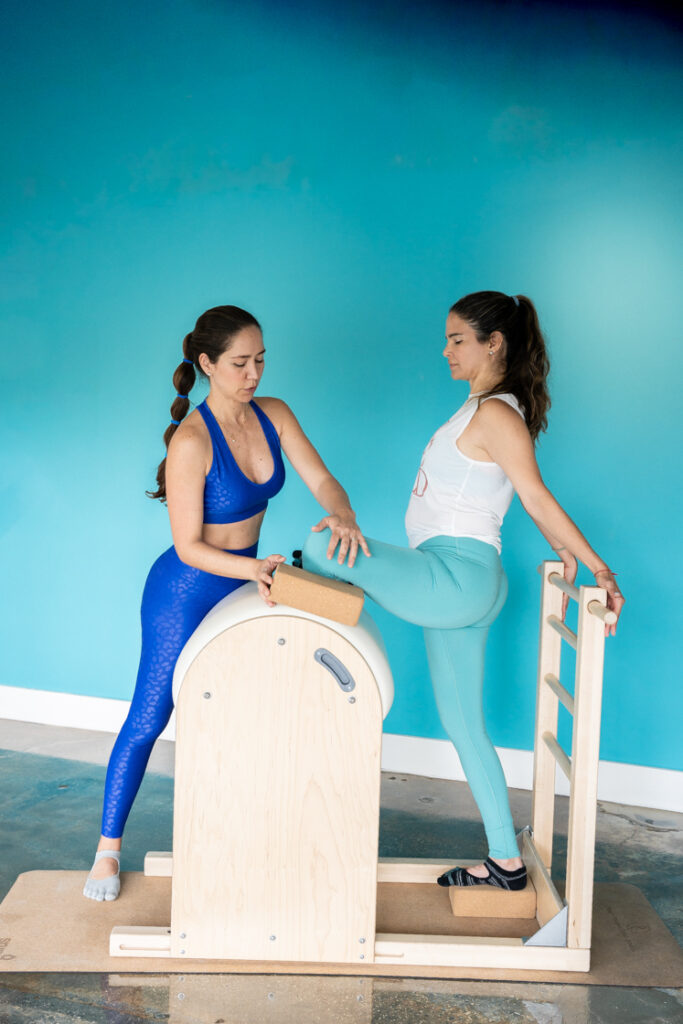
Last but not least, instructors play a crucial role in motivating and encouraging individuals to stay consistent with their Pilates practice. By providing encouragement, support, and positive reinforcement, instructors help individuals overcome challenges, stay motivated, and maintain a regular Pilates routine.
Final Thoughts: The Pros Overcome the Cons
Pilates is a versatile and transformative exercise method that offers a wealth of benefits. Whether you are an athlete looking to enhance performance, a busy professional seeking stress relief, or someone recovering from an injury, Pilates provides a combination of strength, flexibility, and mindfulness that can cater to a diverse range of needs.
This guide has delved into the many advantages of Pilates, such as improving core strength, flexibility, balance, coordination, and even mental well-being. We’ve also touched on some of the potential downsides, like the initial learning curve and the need for proper supervision.
Despite these challenges, the overwhelming benefits make Pilates a highly rewarding practice for those willing to commit. With regular practice, you can experience improved physical fitness, greater body awareness, and a more balanced state of mind.
By combining Pilates with other forms of exercise, such as cardio workouts, strength training, and flexibility exercises, individuals can create a well-rounded fitness program that addresses all aspects of physical fitness.
Ready to experience the transformative benefits of Pilates for yourself? We invite you to visit our locations in Wynwood and Little River! Our experienced instructors are here to guide you on your journey to improved health, fitness, and well-being.
Contact Us:
- Phone: (305) 728-7800
- Email: info@pilathon.com

